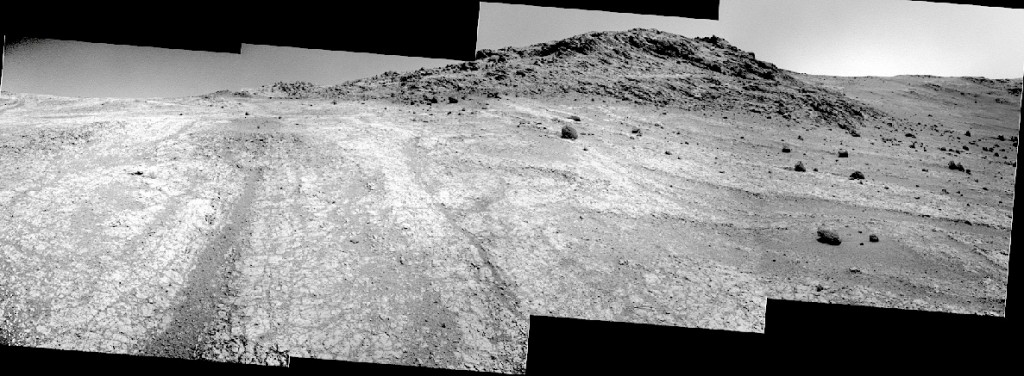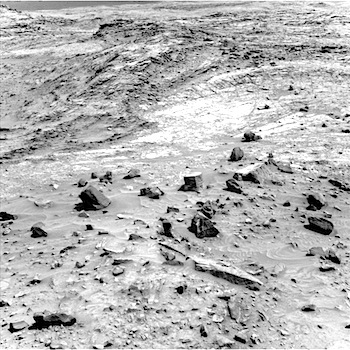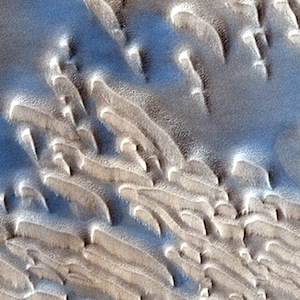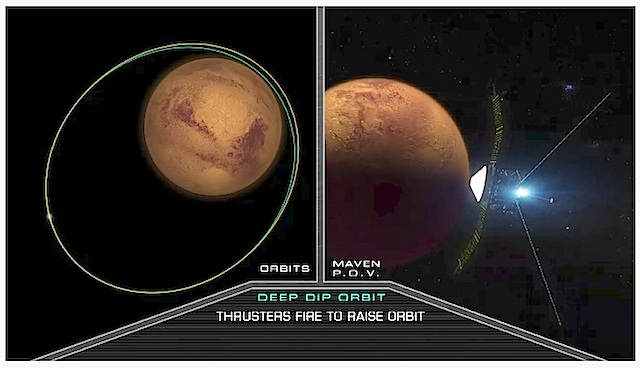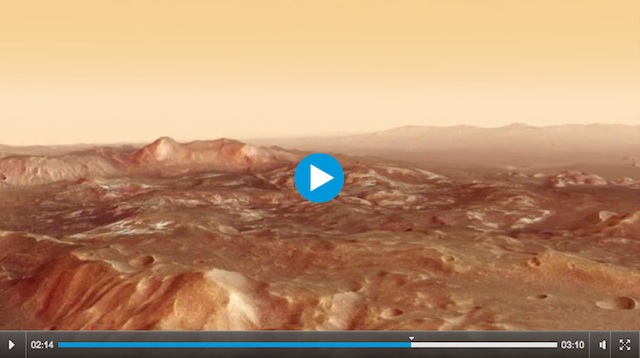 Sol 1102-1104, September 11, 2015, update from USGS scientist Ken Herkenhoff: The Sol 1101 activities that we planned yesterday did not complete due to an arm error while it was being stowed. Apparently the shoulder azimuth motor was too cold, so the rover software halted the stow, which precluded the drive that was to follow. The rover is therefore in the same position that it was yesterday.
Sol 1102-1104, September 11, 2015, update from USGS scientist Ken Herkenhoff: The Sol 1101 activities that we planned yesterday did not complete due to an arm error while it was being stowed. Apparently the shoulder azimuth motor was too cold, so the rover software halted the stow, which precluded the drive that was to follow. The rover is therefore in the same position that it was yesterday.
I’m not scheduled in any operational role today, but I called in to help plan MAHLI imaging of the ChemCam optical window, to monitor dust accumulation. The operations team had to scramble to recover from the arm error and plan science observations, but was able to put together an excellent weekend plan. On Sol 1102, MAHLI will take the standard images of the rover wheels, then acquire a full suite of images of a rock dubbed “Badlands.” [More at link]










